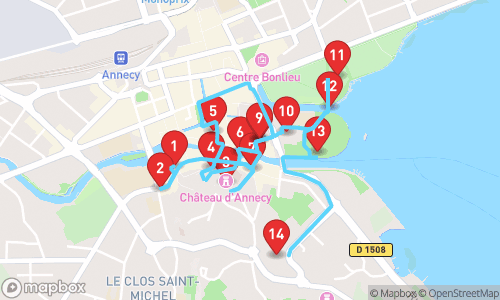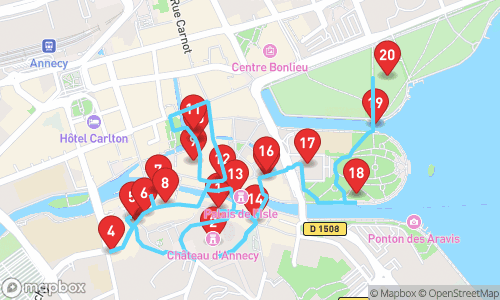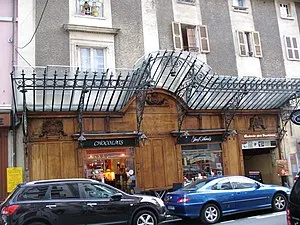
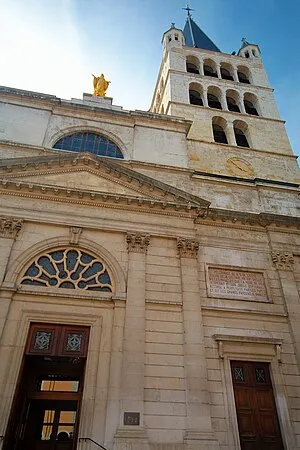
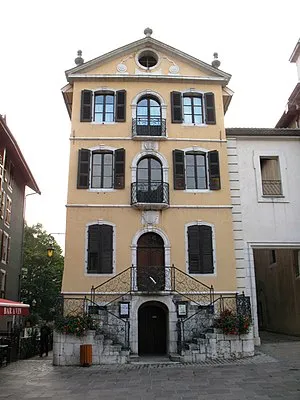
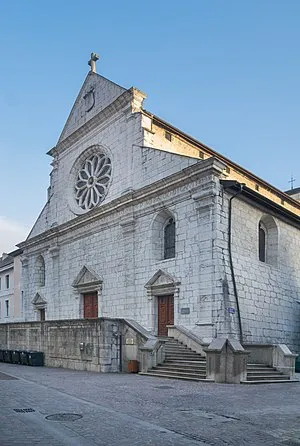
Historical & Cultural Journey Through Enchanting Annecy

Tour Guide
Jenny Multilingual
Welcome to Annecy! On this GPS guided audio tour, we will visit 20 stops on a route of 5.12km. This tour focusses mainly on general tourism.
Locatello is an app where you can generate personal audio guided tours. Set your preferred distance, guide, language and theme, and a guided tour is created on the spot.
Walking Time
Distance
stops
Language
Tour Stops

Magasin, 13 rue Royale, Annecy
A magnificent marquise with an Art Deco twist, housing the Folie Royale Brasserie, serving good coffee, superb hot chocolate, patisserie, and sorbet in a friendly, traditional setting.

Église Notre-Dame-de-Liesse d'Annecy
A church building founded in the 14th century by Comte Amédée III and Robert, originally built on the site of an ancient oratory and proximity to a medieval hospice. The current building dates back to 1846-1851, featuring a neo-classical façade and inside, a cross-shaped nave with full-arched vaults.
Audio Preview
30 sec
Ancien Hôtel de Ville d'Annecy
The Ancien Hôtel de Ville d'Annecy features an 18th-century façade adorned with a staircase and beautiful ironwork, showcasing the town's coat of arms on the first floor.

St. Peter's Cathedral
A Roman Catholic church, built at the beginning of the 16th century as a chapel for a Franciscan priory, and raised to the status of a cathedral in 1822. The cathedral features an organ built by Nicolas-Antoine Lété in 1840-1842.
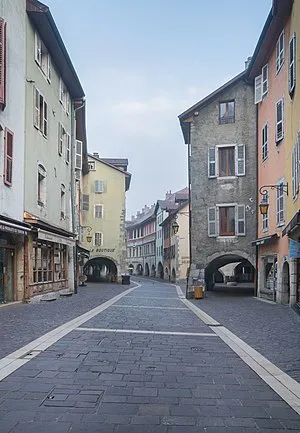
Rue Sainte Claire
A picturesque street in Annecy's old town, Rue Sainte Claire has been preserved from tourist development, retaining its old private mansions with arcades and vaulted passageways leading to the Thiou River's banks.

Fontaine Quiberet
A 17th-century fountain with a coat of arms featuring the city's emblem, a trout, symbolizing fishing activity on the nearby lake, above it. It dates back to 1646 and was redeveloped due to watering issues and nuisances for residents.
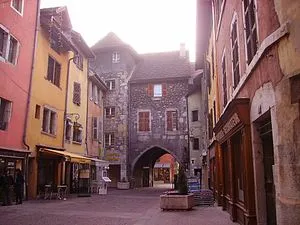
Porte du Sépulcre d'Annecy
A medieval city gate, built in 1448, named after the former convent of the Saint-Sépulcre, now an arch and no longer a closed gate, but a witness to Annecy's history, with its wide ogival opening and worn hinges.

Porte Sainte-Claire d'Annecy
A city gate, the Porte Sainte-Claire, oriented towards Chambéry, features an ogival opening with machicolations, a bell tower, and worn hinges, providing access to Annecy's old quarters.
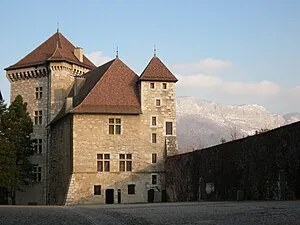
Château d'Annecy
A historic castle and museum in Annecy, built between the 12th and 16th centuries, serving as a residence for counts and dukes, featuring towers, logis, and a museum with exhibits on Alpine culture, art, and lakeside inhabitants.

Fontaine de la rue de l'Île
A cast-iron fountain with a stone basin, once a rubbish dump and eventually condemned, now serves as a terminal to bring drinking water from the Balmettes spring, allowing residents to access water closer to their homes.
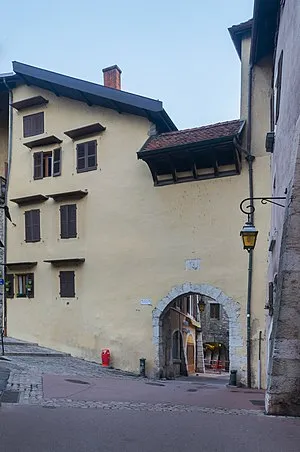
Porte Perrière
A medieval city gate, known as Porte Perrière, is a narrow and massive gate with Romanesque-style architecture and machicolations, topped with the city's coat of arms featuring a fish, making it an important passage for travelers and merchants.
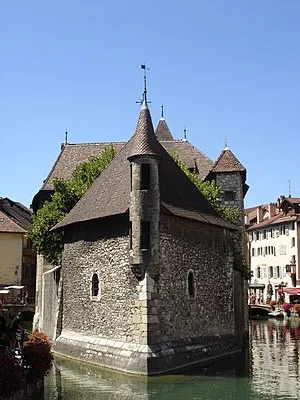
Palais de l'Isle
A fortified house built in the 12th century, transformed over the centuries, featuring a unique enceinte in the shape of a fuselage that follows the island's outline, with a logis-tour core and multiple levels.

Magasin, 1 rue Jean-Jacques Rousseau, Annecy
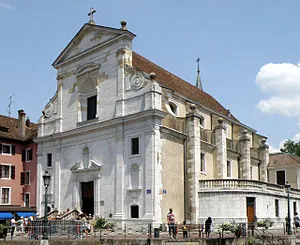
Saint-François-de-Sales church
A Baroque-style church built from 1642, inspired by the Church of the Gesù in Rome, with a complex history including being transformed into a factory and later restored in 2003. It was once the sanctuary of the Visitation order's first monastery and housed the tombs of Jeanne de Chantal and François de Sales.
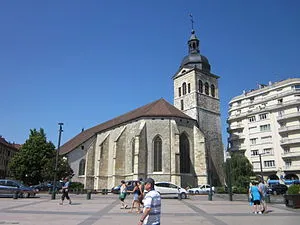
Église Saint-Maurice
A Roman Catholic church, Église Saint-Maurice is the oldest in Annecy, built in 1422 as a chapel for a Dominican convent. Its Gothic architecture features chapels added by noble families and artisan corporations from 1478 onwards.
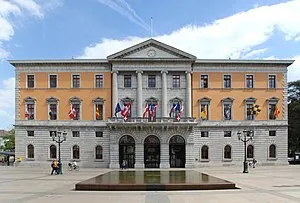
Annecy Town Hall
A neoclassical-style building, the Annecy Town Hall is a historic municipal building, constructed in the mid-19th century during the time when Annecy was part of the Kingdom of Sardaigne.
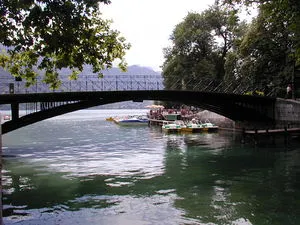
Pont des Amours
A romantic pedestrian bridge over the lake, connecting the Pâquier and Jardins de l'Europe, with stunning views of the city, canals, and lake, known for its picturesque setting and legends of lovers' reunions.
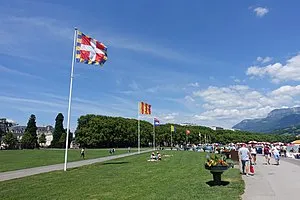
Le Pâquier
Le Pâquier is a promenade that was originally a wetland area, now featuring a pedestrian bridge, a parking lot, and a park with an arboretum and an old school building.
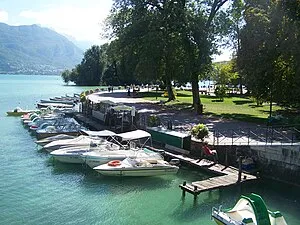
Jardins de l'Europe d'Annecy
A garden located on an ancient island, once a marshy area, now housing over 250 trees and various shrubs. The Jardins de l'Europe offer a peaceful promenade space, with a quay, benches, and a boat docking area.
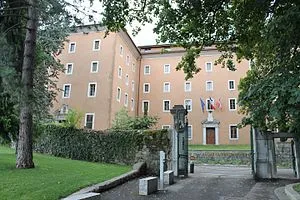
Grand séminaire d'Annecy
A former religious school building from the late 17th century, serving as a seminary for priests in the diocese of Geneva and Annecy, and now hosting a variety of cultural institutions and artistic activities.
Download App
Experience this tour and many more with our mobile app. Available for iOS and Android.
Audio Preview
Tour Map

Quick Facts
- ✓GPS-guided navigation
- ✓Professional audio narration
- ✓Offline maps available
- ✓Premium content included
Why Choose This Tour
Expert Local Guide
Narrated by Jenny Multilingual, specializing in general tourism
Flexible Timing
Take the tour at your own pace, any time of day
